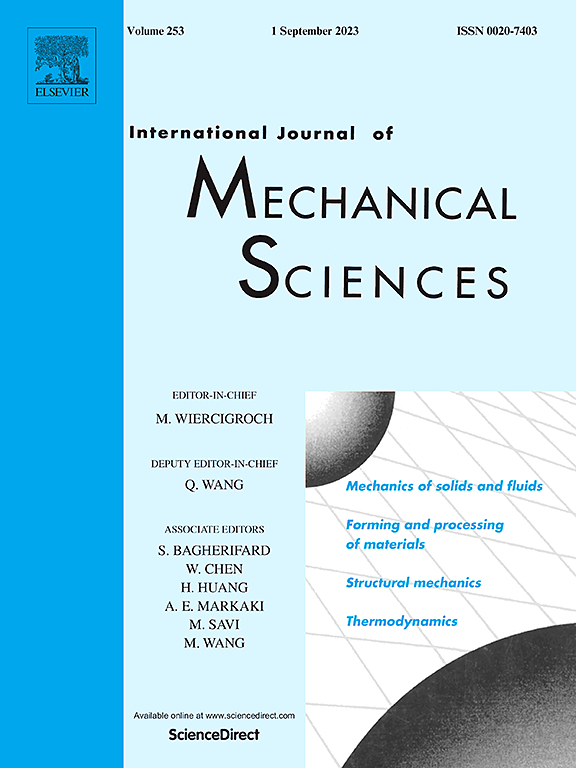Hyper-reduction modeling and energy transfer analysis of fluid-transporting series-parallel pipes
IF 7.1
1区 工程技术
Q1 ENGINEERING, MECHANICAL
International Journal of Mechanical Sciences
Pub Date : 2025-02-01
DOI:10.1016/j.ijmecsci.2025.109974
引用次数: 0
Abstract
This work proposes a parameterized hyper-reduction modeling method for the fluid-transporting series-parallel pipe systems using the improved transfer matrix method of the multi-body system (MSTMM) and FEM (FEM-IMSTMM), which can predict the dynamic stress response of pipe systems efficiently and accurately. Furthermore, a camera-based vibration test is conducted to obtain the global vibration responses of the pipe systems, followed by energy transfer analysis between pipes through structural intensity analysis. Specifically, the improvements of the improved MSTMM are twofold: firstly, pre-processing of the substructure boundaries is achieved by constructing virtual nodes and rigid binding, thus avoiding the ill-conditioned transfer matrix encountered when the MSTMM is directly applied to three-dimensional solid element models; Secondly, a state transfer matrix at parallel connections is constructed, thus extending MSTMM to parallel structures. Moreover, the FEM-IMSTMM sequentially achieves the reduction of boundary, internal, modal, and intermediate interface degrees of freedom (DOFs), and the number of DOFs of the final reduced-order model is only six times the number of pipes. Finally, the influence of series and parallel connection positions on the vibration transfer behaviors is analyzed, revealing rich vibration transfer phenomena, such as energy convection, convergence, and circulation transfer.

求助全文
约1分钟内获得全文
求助全文
来源期刊

International Journal of Mechanical Sciences
工程技术-工程:机械
CiteScore
12.80
自引率
17.80%
发文量
769
审稿时长
19 days
期刊介绍:
The International Journal of Mechanical Sciences (IJMS) serves as a global platform for the publication and dissemination of original research that contributes to a deeper scientific understanding of the fundamental disciplines within mechanical, civil, and material engineering.
The primary focus of IJMS is to showcase innovative and ground-breaking work that utilizes analytical and computational modeling techniques, such as Finite Element Method (FEM), Boundary Element Method (BEM), and mesh-free methods, among others. These modeling methods are applied to diverse fields including rigid-body mechanics (e.g., dynamics, vibration, stability), structural mechanics, metal forming, advanced materials (e.g., metals, composites, cellular, smart) behavior and applications, impact mechanics, strain localization, and other nonlinear effects (e.g., large deflections, plasticity, fracture).
Additionally, IJMS covers the realms of fluid mechanics (both external and internal flows), tribology, thermodynamics, and materials processing. These subjects collectively form the core of the journal's content.
In summary, IJMS provides a prestigious platform for researchers to present their original contributions, shedding light on analytical and computational modeling methods in various areas of mechanical engineering, as well as exploring the behavior and application of advanced materials, fluid mechanics, thermodynamics, and materials processing.
 求助内容:
求助内容: 应助结果提醒方式:
应助结果提醒方式:


